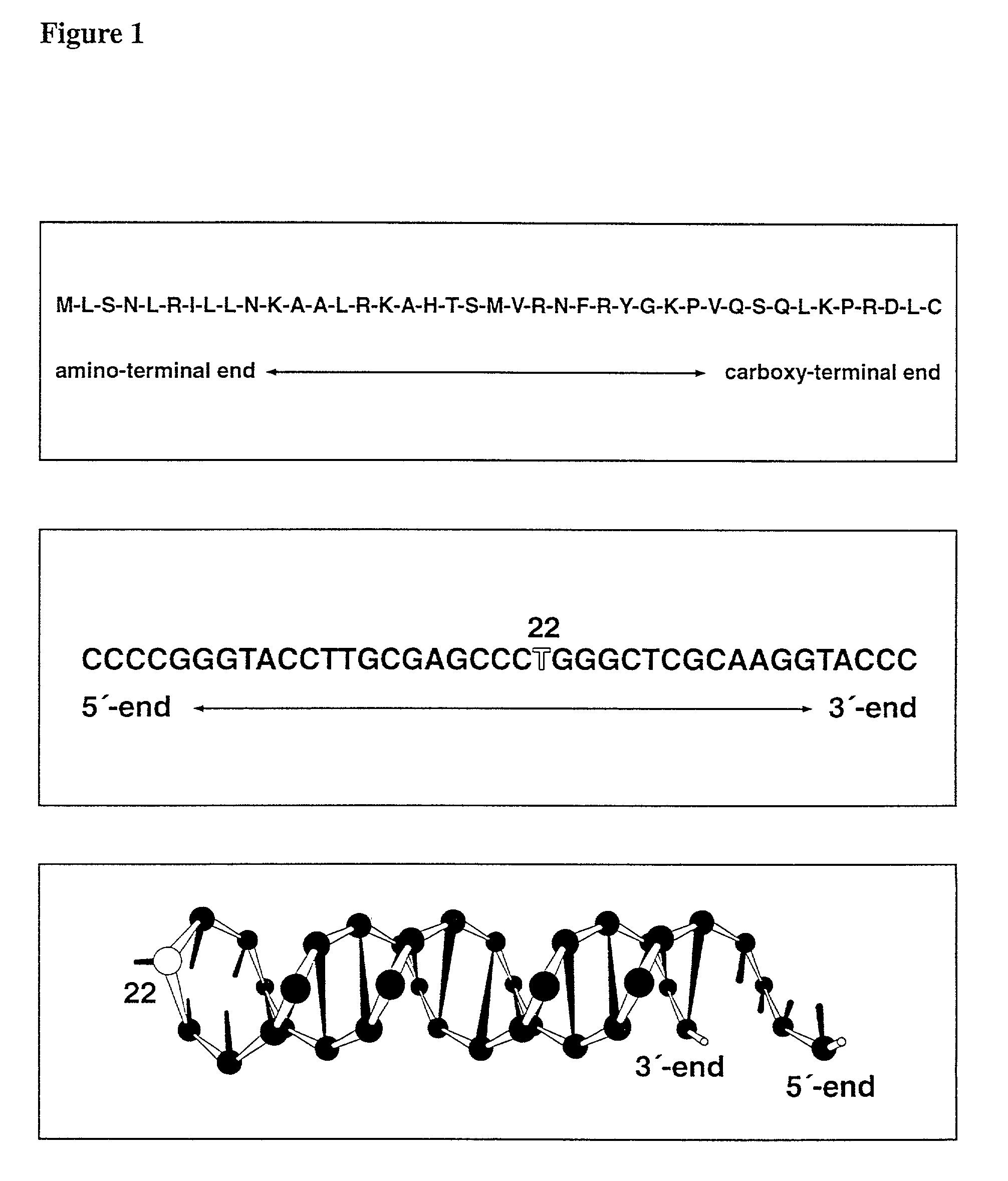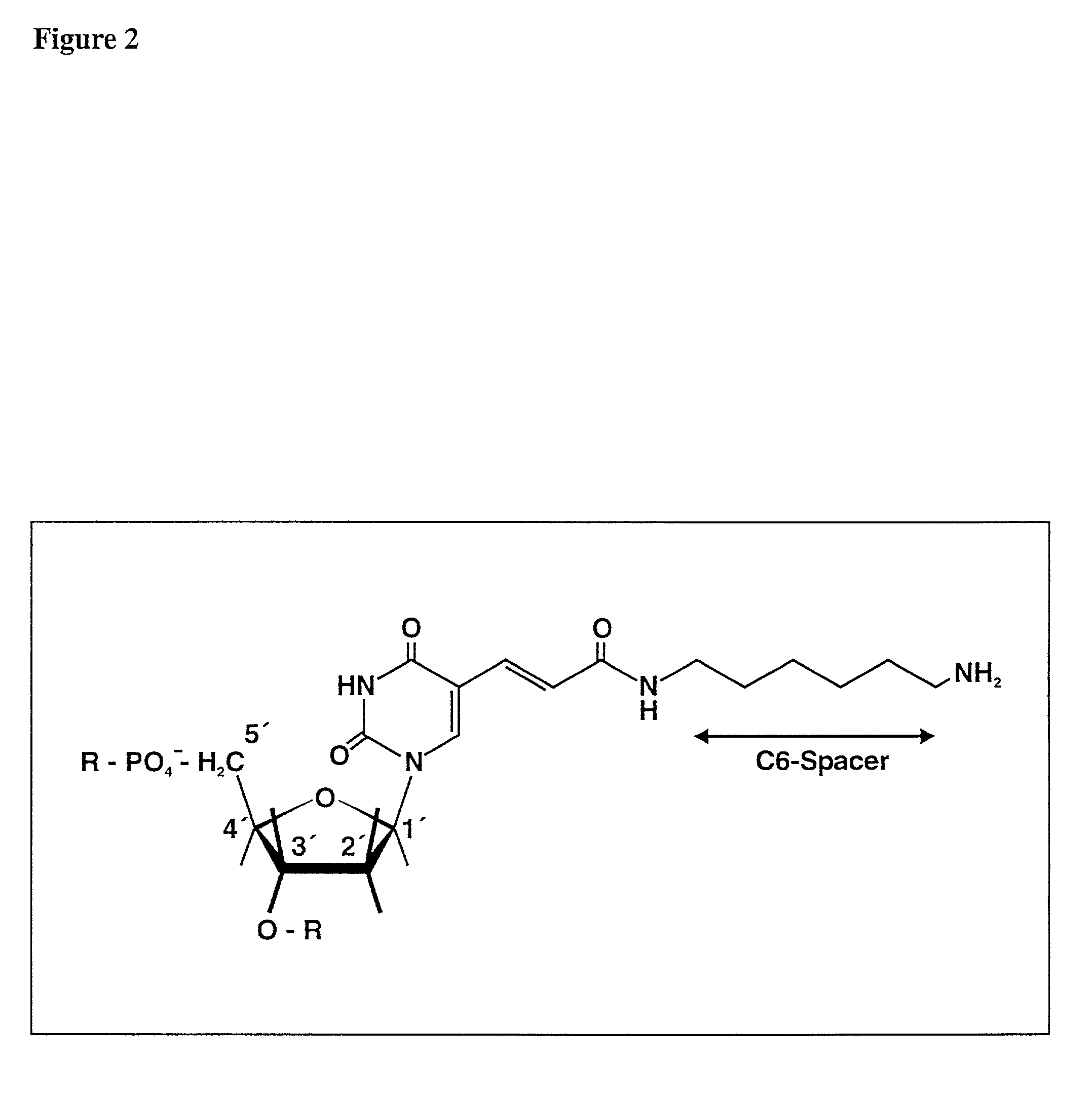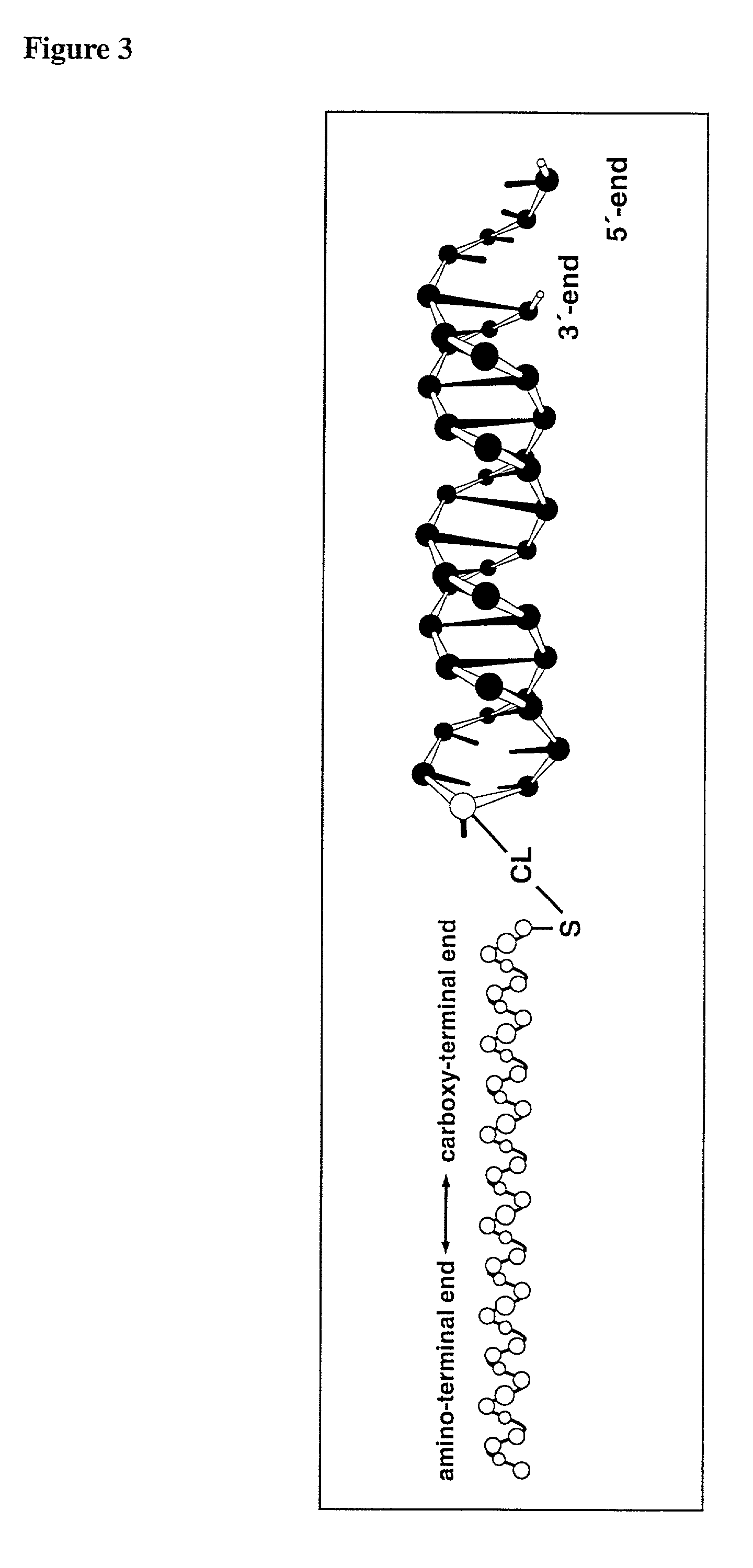Chimerical peptide-nucleic acid fragment, process for producing the same and its for appropriately introducing nucleic acids into cell organelles and cells
a technology of which is applied in the field of chimerical peptides and nucleic acids, can solve the problems of not being able to appropriately introduce nucleic acids into cells or cell organelles via the protein import rou
- Summary
- Abstract
- Description
- Claims
- Application Information
AI Technical Summary
Problems solved by technology
Method used
Image
Examples
example 1
A. Example 1
[0084] Introduction of a Chimerical Peptide-Nucleic Acid Fragment Into the Mitochondria
[0085] The overcoming of the mitochondrial double membrane system with a DNA translocation vector was studied to prove that nucleic acids can be transported appropriately across membranes by the above-described process. For this purpose, the mitochondrial signal sequence of the ornithine transcarbamylase (A. L. Horwich et al. (1983), "Molecular cloning of the cDNA coding for rat ornithine transcarbamylase", Proc. Natl. Aca. Sci. U.S.A. 80:4258-4262) (enzyme of urea cycle, naturally localized in the matrix of the mitochondria) was chemically prepared and purified. The original sequence was extended by a cysteine at the C terminus as reactive group for the subsequent linkage with the DNA (see FIG. 1). This ensured that the heterobifunctional cross-linker (MBS) can only be linked with the thiol group of the only cysteine. A DNA oligonucleotide (39 nucleotides) were chosen as linkage partn...
example 2
B. Example 2
[0092] Incorporation of a Replicative and Transcription-Active Chimerical Peptide-Nucleic Acid Fragment (Plasmid) Into the Mitochondria of Living Cells
[0093] In order to prove that a linear peptide-nucleic acid plasmid having cyclic ends (`hairpin loops`) can overcome membranes in vivo via the protein import route and can be transcribed and replicated in spite of the chemical linkage with a signal peptide, the transcription and replication behavior were studies after the transfection of cells and the import into the matrix of the mitochondria. For this purpose, the signal peptide of the mitochondrial ornithine transcarbamylase was prepared synthetically, purified and linked with a nucleic acid plasmid.
[0094] Precondition for the examination of the correct transcription and replication behavior is the physical structure of the plasmid: for the experiment described below, a 3232 bp long double-stranded vector DNA (dsDNA) was cloned into pBluescript.RTM. (Stratagene). For t...
PUM
| Property | Measurement | Unit |
|---|---|---|
| pH | aaaaa | aaaaa |
| pH | aaaaa | aaaaa |
| reaction time | aaaaa | aaaaa |
Abstract
Description
Claims
Application Information
 Login to View More
Login to View More - R&D
- Intellectual Property
- Life Sciences
- Materials
- Tech Scout
- Unparalleled Data Quality
- Higher Quality Content
- 60% Fewer Hallucinations
Browse by: Latest US Patents, China's latest patents, Technical Efficacy Thesaurus, Application Domain, Technology Topic, Popular Technical Reports.
© 2025 PatSnap. All rights reserved.Legal|Privacy policy|Modern Slavery Act Transparency Statement|Sitemap|About US| Contact US: help@patsnap.com



